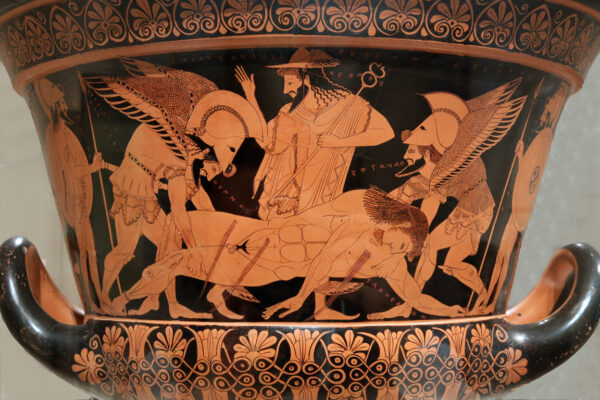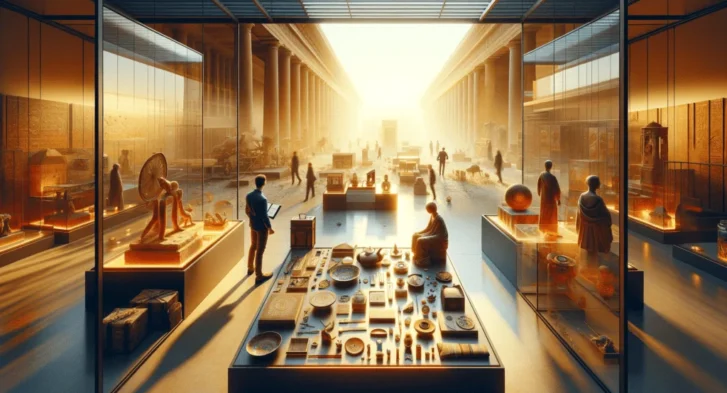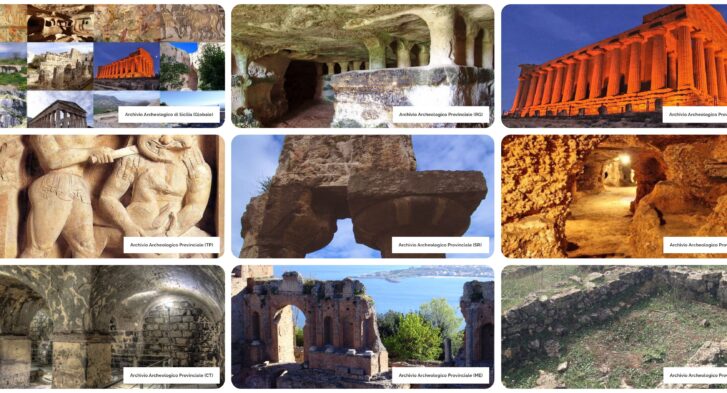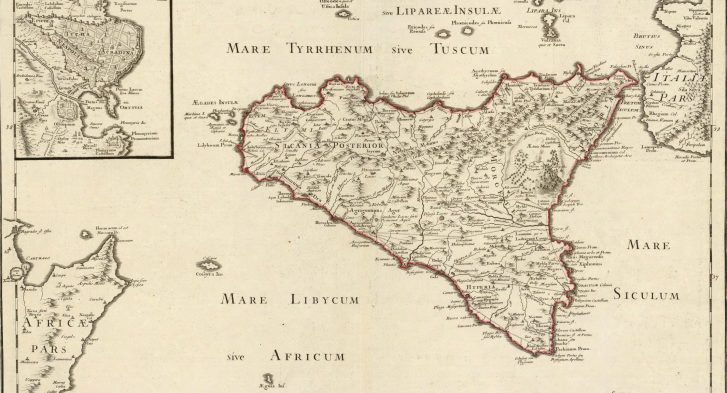Hermes (Mercury)
by Ignazio Caloggero

Sarpedon carried by Hypno e Thanato observed by Hermes. Side A of the so-called Euphronios crater, approx. 515 BC (Wikipedia)
Reference page: Repertory of Cults and Myths
Origins of the Myth
Hermes, identified by the Romans with Mercury, was considered the son of Zeus and Maia. He was often seen as the interpreter of the divine will, but above all he was the protector of commerce and theft. As soon as he was born, he himself had been the author of a skilled theft against his brother Apollo. Born in a cave on Mount Cilene, south of Arcadia, he managed to free himself from the bandages that wrapped him up and went to Thessaly, where his brother Apollo was found who was a cowherd. Taking advantage of his brother's momentary absence, he stole part of his animals and brought them across Greece to Pylos, where he sacrificed two oxen. Hiding the rest of the animals, he returned to the cave where he was born. At the entrance to the cave he found a turtle, took it, emptied it and, with the intestines of the sacrificed oxen, built the lyre. An old man named Batto had witnessed his dexterity who told everything to Apollo, who went to Mount Cilene to complain to Maia about the robberies of his son. Maia then showed Apollo her brother in swaddling clothes and asked him how she could accuse such a small child of such feats. At this point Apollo asked for the intervention of Zeus who, knowing the truth, ordered the child to return the animals. Apollo, meanwhile, had gotten to see the lyre and hear the sounds that Hermes had managed to make it emit. Falling in love with the instrument, he asked and obtained from Hermes to exchange it for his oxen.
Hermes were dedicated along the streets and on the crossroads to Hermes, rectangular pillars whose upper part was modeled with a bust representing him, often equipped with very showy virile organs. It is probable, in fact, that the column was originally a phallic symbol, but its purpose was to indicate the right way to travellers; and in fact, among the various tasks attributed to Hermes, there was also that of being the protector of travelers on the roads.
Hermes was often represented with a large hat, with winged sandals that made him faster than the wind and with the caduceus, symbol of his functions as divine herald.
Note: The caduceus was a mace or staff used by heralds and ambassadors in times of war. In mythology it was the rod surmounted by two small wings, with two figures of snakes intertwined to form an arch with the highest part of the body. The caduceus later became the emblem of pharmacists.
According to Diodorus Siculus (lib. I.16), the alphabet was invented thanks to Hermes; moreover, he was the first to establish the discipline of wrestling and taught the Greeks the faculty of expressing their thoughts (hermenia) and it is for this reason that he was given the name of Hermes. Again according to Diodorus, it was Hermes, and not Athena, who discovered the olive tree.
In addition to the lyre, Hermes is also credited with inventing the syringe or pan flute.
The Myth in Sicily
In Sicily he is seen above all as the father of Daphnis and his cult is related to that of Demeter and Persephone [Ciaceri Emanuele: Culti e Miti dell'Antica Sicilia. p. 181].
The news regarding the cult of Hermes are few: it is spoken of in the centers of Akray, Agrigento, Palermo, Enna, Menai and Alunzio.
A Morgantina the cult of Hermes was probably connected to those of Gaea and Pluto. The three deities, in fact, were venerated in the same sanctuary whose remains are still visible to the east of the ancient theater. The attribution of the three divinities to the sanctuary is justified by the discovery of some lead sheets on which their names are reported.
The cult of Hermes was also present in SIRACUSA, where in his honor, the Hermes, festivals during which competitions and fights between children took place. Hermes, in fact, was considered guardian and protector of youth and similar festivals took place in many Greek cities.
The existence of the cult a Tindari it would be testified by Cicero who narrates that the governor Verre stole a statue of Mercury from the city. After the conquest of Carthage, Scipio Publius donated a statue of Mercury to the town of Tindari but Verre asked that it be removed and handed over to him: the city senate however opposed it. After several attempts, Verre summoned Sopatro, the president of the local senate, to Syracuse, and upon the umpteenth refusal to hand over the statue, he reacted by having him stripped naked and tied to a statue in the public square. Only when the senate of Tindari allowed the statue of Mercury to be removed did Verres release poor Sopater, who almost died of exposure.
Religious syncretism
With the Christian religion, the cult of St. Julian, protector of travelers and pilgrims, seems to have taken the place of that of Hermes, the pagan god, protector of wayfarers. An ancient Sicilian proverb says:
yes you junciri sanu
Nun ti scurdari lu Patrinnostru in S. Giulianu.
(If you want to arrive healthy, don't forget the Paternostro di S. Giuliano).
The paternoster consists of a prayer addressed to S. Giuliano by those who are about to embark on a journey that may present dangers [Giuseppe Pitrè: Spettacoli e feste Popolare Siciliane. p. 310].
Extract from the Book ” Cults of Ancient Sicily” by Ignazio Caloggero ISBN: 9788832060102 © 2022 Centro Studi Helios srl







